MUSEUM (Day 8 - part 1)
We spent the morning at the Horry (pronounced O-REE) County Museum. Not realizing how impressive it was, we didn't have enough time to fully appreciate all of it.
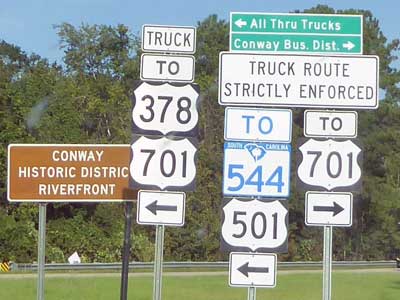
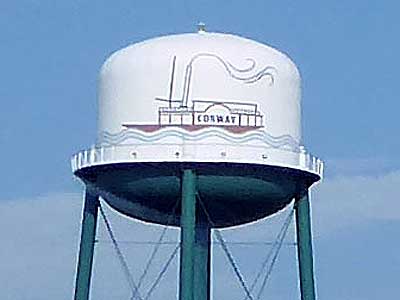
F.G. (Franklin Gorham) Burroughs (1834-1897) was a prominent local businessman who established the first school in 1877. As the community grew, this larger building was built in 1905. The original county museum was established in 1979 and moved here in 2012.
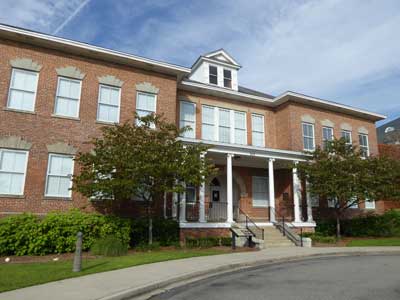
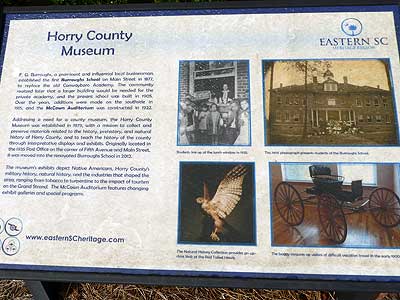
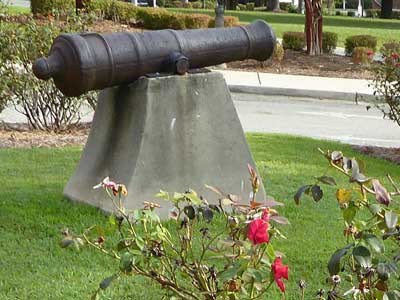
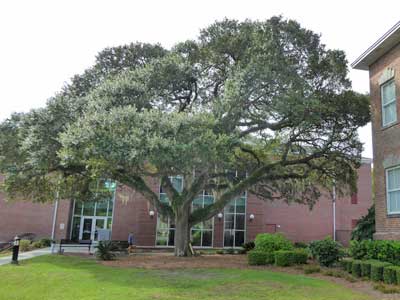
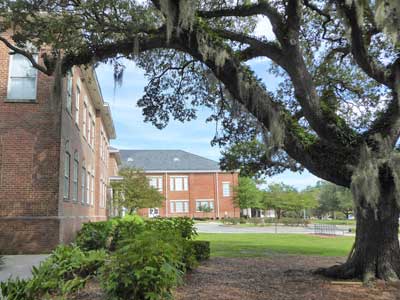
This (then small) Live Oak tree was rescued by teacher Mrs. Frances Green Coles Burroughs (1882-1964, wife of Arthur Burroughs, who was a son of F. G Burroughs) and her first grade class after it had been blown over in a storm in 1912. They straightened, staked and then nursed it back to health by watering it daily from water carried up from a nearby spring.
Live oaks grow exclusively in the southeastern US. They seldom reach taller than 50 feet but can spread their limbs out 150 feet. In days of old, their super-dense wood was used extensively in the building of wooden ships. The USS Constitution, built in 1797, was made from a mix of oak woods which were layered to strengthen the hull.
The museum was two levels, connected by a large circular staircase which swirled around a large fish tank!
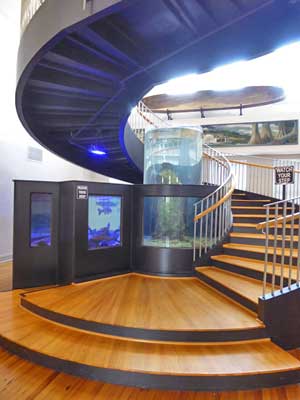
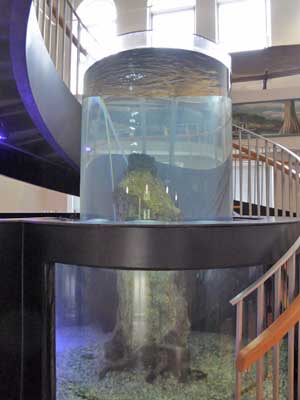
In 2014, the museum worked with Acrylic Tank Manufacturing to create this 4,400-gallon freshwater aquarium.

It contained fish found in the local rivers and lakes.
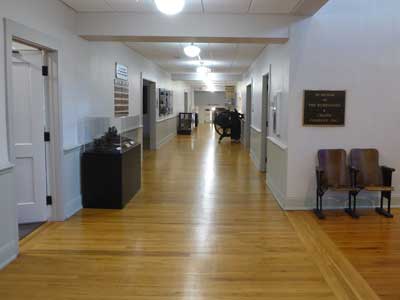
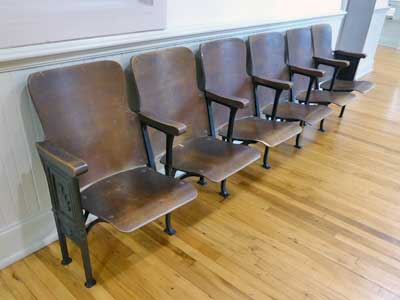
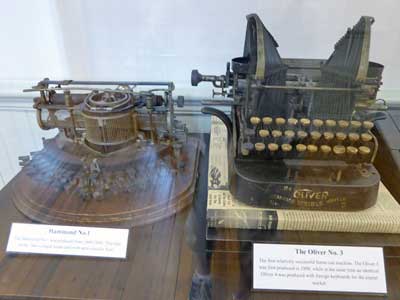
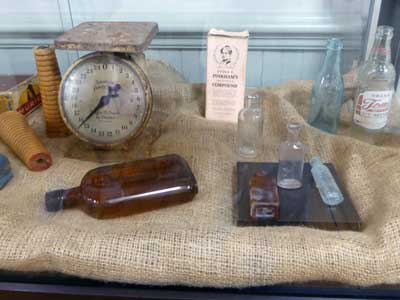
Old typewriters ... and displays of other intersting artifacts

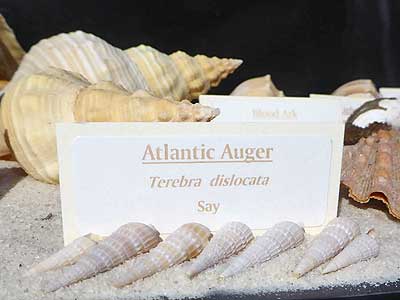
Shells
The local history...
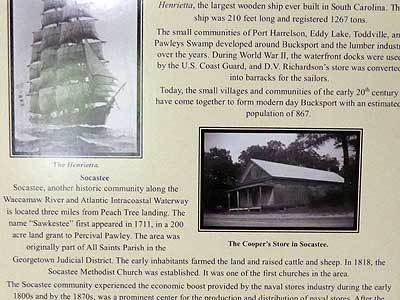
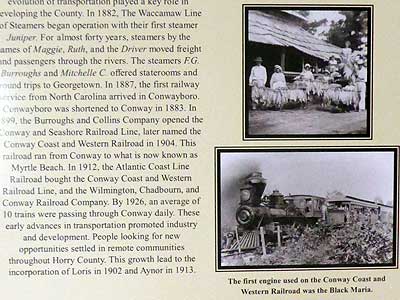
Horry County is the largest county in South Carolina with 1,255 square miles. When settlers arrived in the 1700s, this was a wilderness of swamps, rivers and bays. The colony offered them 50 acres of land for every family member and waived their land taxes for 10 years. The new inhabitants cleared the land and formed the self-sufficient community of Kingston.
In 1785 (after the Revolutionary War), General Robert Conway (1753 - 1823) relocated here from Charleston and was elected to the local government. In 1801, a new court district was added and named after Revolutionary War General Peter Horry. The name was changed from Kingston to Conwayboro (later shortened to Conway in 1883), and by 1868 the Horry district had become its own county.
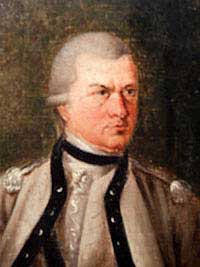
Peter Horry (1743/1744-1815)
Unlike some of the surrounding areas, Horry County did not develop into a plantation economy. Instead, rice, cotton and indigo were produced on a smaller scale. Timber and turpentine were large local industries, and at the end of the 1800s, tobacco became a major crop. Steamships began running the rivers in 1882 and the first train arrived in 1887.
In the 1940s, Horry County became the temporary home and staging ground for many WWII soldiers. The federal government acquired over 1000,000 acres from 300 landowners to create a bombing range. This led to the development of the Myrtle Beach Air Force Base in the 1950s (until it was closed in 1993). By the 1960s, tourism to the coastal beaches was replacing the timber, turpentine and agricultural industries, and the Grand Strand was born.
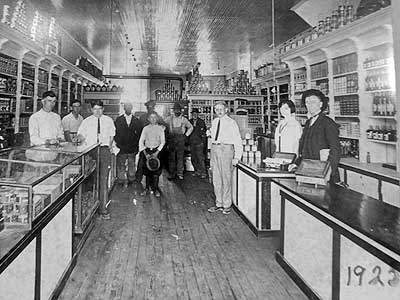

Myrtle Beach...
Prior to the American Revolution, it was common practice for the King of England to give land grants to notable families to be used for settlements. John and Mary Esther Withers received some 3,000 acres along the coast which included a tidal creek, known locally as a swash. The area became known as Withers Swash, Myrtle Swash or the Eight Mile Swash. They remained there for the next half century until in 1822, a strong hurricane swept the house into the ocean, drowning 18 people inside (including all but one of the family as well as many slaves). They decided to abandon the area.
In 1881, the Burroughs and Collins Company purchased the area, and the growing community became known as New Town (to help the newly established railroad distinguish it from Conway, the old town). Around 1900, a contest was held to rename it. Adeline Burroughs suggested honoring the locally abundant shrub, the southern wax myrtle. It incorporated as a town in 1938 and as a city in 1957.
Myrtle Beach has technically been an island since it became separated from the continental US in 1936 by the Intracoastal Waterway.
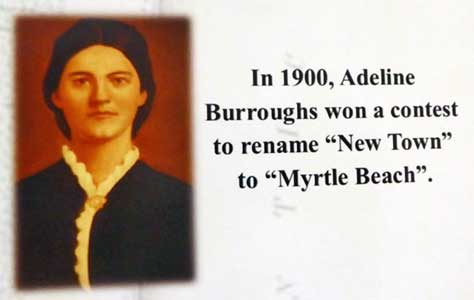
Adeline Cooper Burroughs (1846-1919), wife of F. G. Burroughs
The science history room...
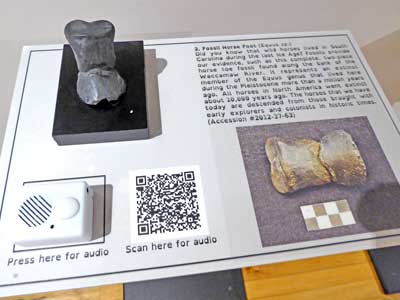
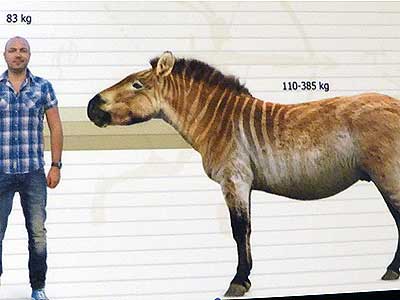
Wild horses once lived in South Carolina. This horse toe is fossil evidence and is from a member of the horse family that lived here over a million years ago. Horses went extinct in North American about 10,000 years ago but their descendants were brought back to this continent by early European explorers.
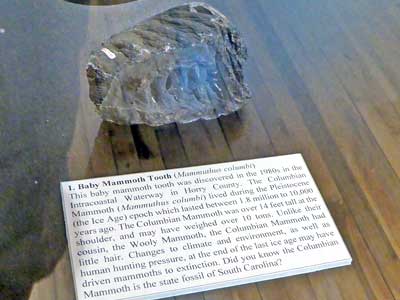
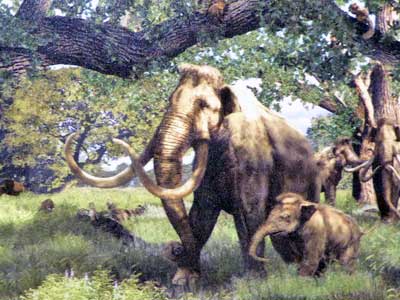
This baby mammoth tooth was discovered in the 1980s in the Intracoastal Waterway. The Columbian Mammoth lived here during the Pleistocene (the Ice Age) epoch which lasted between 1.8 million years to 10,000 years ago. Unlike their cousin the Wooly Mammoth, they had little hair. They went extinct at the end of the last Ice Age due to climate and environment change as well as from over-hunting by humans. They were over 14 feet tall and may have weighed over 10 tons.
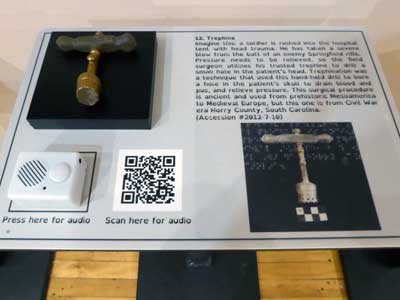
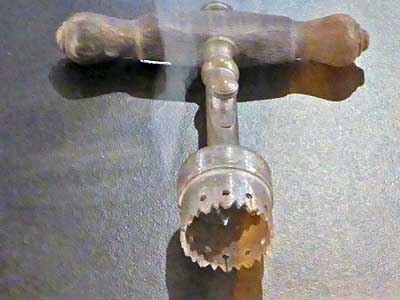
The trephine was used to drill a small hole in the skull to drain blood and pus (as the result of some injury or illness) in order to relieve pressure. This is an ancient procedure used on several continents. This one is from the Civil War era.
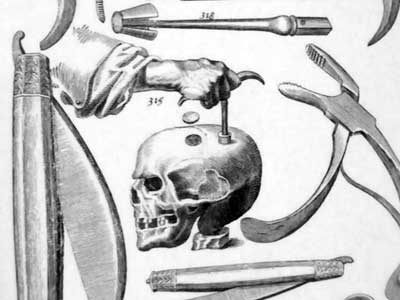
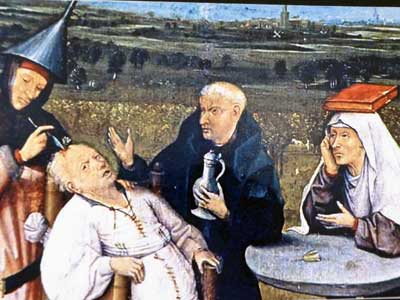
In spite of the strong visual image of a man having a hole drilled into his skull, are you asking the same question I am? Why does this woman have a book on her head??
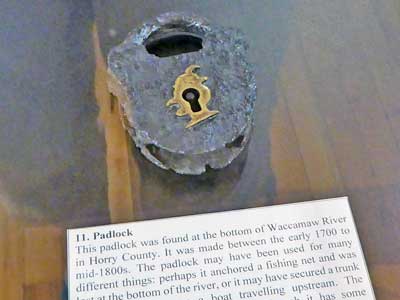
A padlock found in the Waccamaw River
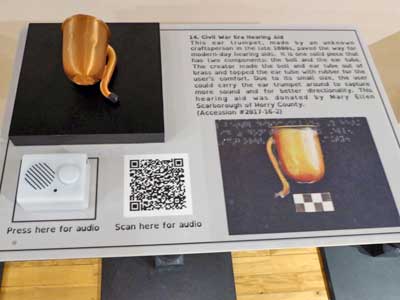

An ear trumpet served as a hearing aid in the late 1800s. It was used to capture more sound and for better directionality.

A small exhibit on the Waccamaw people....
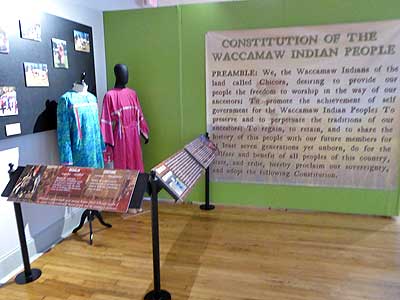
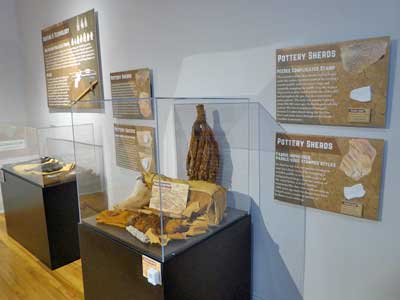
Their ancestors were hunter-gathers who arrived in this area some 10,000 years ago. They fed on oysters and clams, hunted animals, and collected plants for food. Evidence of their presence was also found on Waties Island in the form of burial and shell mounds. Beginning some 5,000 years ago, they began farming and making pottery. The cultivation of crops brought with it the ability to feed larger amounts of people with a relatively consistent supply of food.
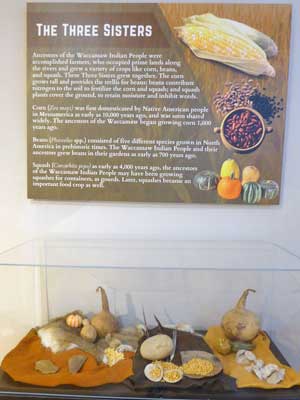
The traditional crops of corn, beans and squash are often known as the Three Sisters. The tall corn provides a trellis for the beans; the beans put nitrogen into the soil for the corn and squash; and the squash covers the ground to retain moisture and inhibit weeds.
The textiles room...
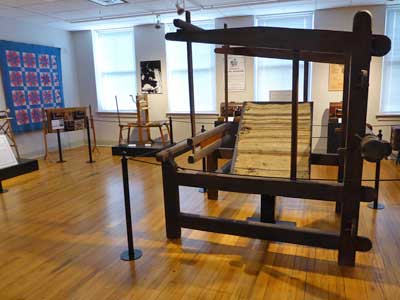
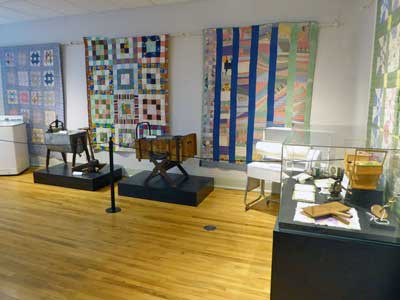
A quilt consists of a front and a back, filled with an inner layer and held together by stitching. The earliest quilts were made by English and Dutch settlers. They were purely functional and used as warm bed covers or to prevent drafts from doors and windows. They were made from the scraps of old blankets and clothing. Only much later did they become more ornate and artistic.
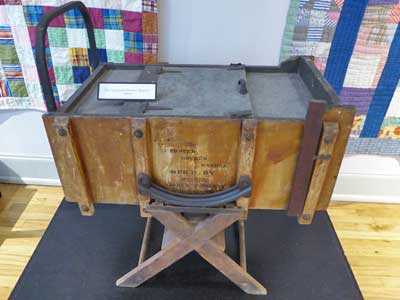

(left) An improvised rocker washer from the 1890s
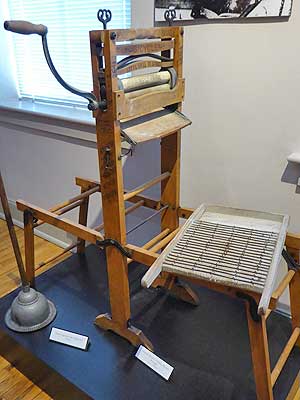
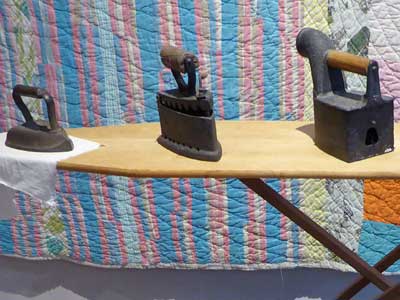
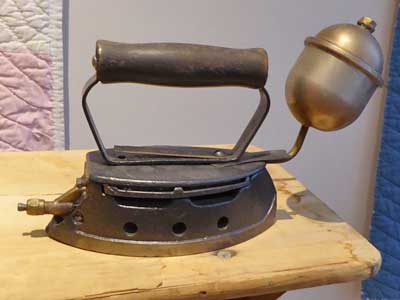
A "sad iron" (heated by placing it on a hot stovetop), a coal iron, a corn cob iron (filled with burning corn cobs) ... and a Coleman iron using fuel
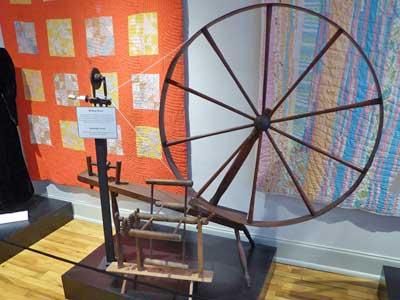
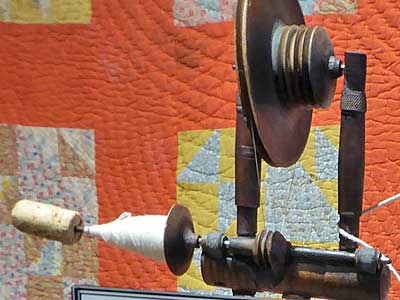
A walking wheel, a type of spinning wheel where fiber was spun into yarn or thread by feeding the raw material onto the spindle with one hand while "walking" the wheel around with the other hand. ... The Spinning Jenny was used to wind yarn and measure it into skeins.
A bottle exhibit...

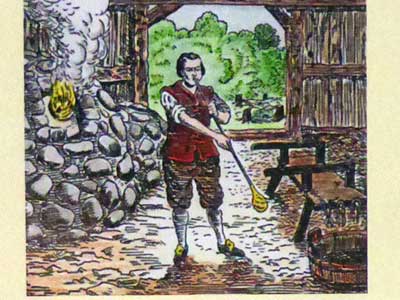
Bottles ranged in size, shapes and colors. Glass could be hand-blown, molded, or machine made.
return • continue

